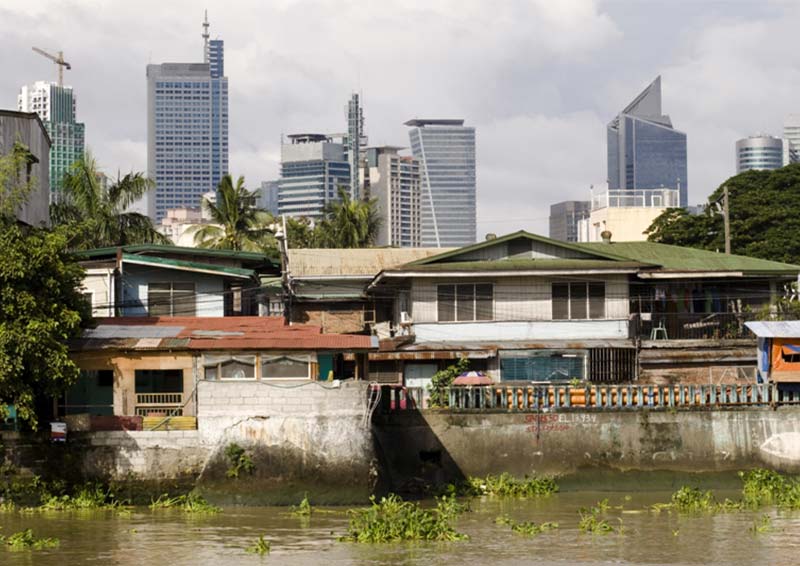Urbanisation definition
 Urbanisation can have numerous interpretations. It may describe the process by which areas are transformed from rural or semi-rural to urban. This means those areas start to display the characteristics of towns and cities, such as increased population, housing and social infrastructure, transport infrastructure (roads and railways) and leisure and other facilities.
Urbanisation can have numerous interpretations. It may describe the process by which areas are transformed from rural or semi-rural to urban. This means those areas start to display the characteristics of towns and cities, such as increased population, housing and social infrastructure, transport infrastructure (roads and railways) and leisure and other facilities.
As these towns and cities grow, they may experience increasing urban density: more people and employers move in necessitating new infrastructure to cater for them. The process may continue rapidly until it becomes ‘urban sprawl’ – which is when a town or city and its suburbs spread over previously undeveloped land. For more information see: Densification and Urban sprawl.
In another interpretation, urbanisation of a region or nation implies that the number of people living in areas classed as ‘urban’ has increased or is increasing (with a high average rate of change). This may place a heavy burden on existing infrastructure that is only relieved when more infrastructure is put into place.
A country may be said to be urbanised depending on the proportion of the population living in urban areas. For example, some may class a country as ‘urbanised’ if over 60%-70% of its population lives in urban areas. Others may have a higher or lower threshold.
Some countries such as Singapore, Kuwait and Monaco have 100% urbanisation. Other urbanisation rates include:
| Country | Proportion of population living in urban areas |
| Belgium | 98% |
| UK | 83.4% |
| France and Spain | 80% |
| Ireland | 63% |
| India | 34% |
| Sri Lanka | 18.5% |
Urbanisation is both a historical and global phenomenon. Human settlements become villages, which can grow into towns and then cities. Transformed in this way, they start to offer greater employment opportunities, the benefits of proximity, social interaction and knowledge acquisition, and the prospect of a 'better' life, thereby attracting more employers and people.
The process began millennia ago and is still continuing as rural culture becomes consumed by the urban. Over time this has seen an unprecedented movement of people into cities which become overpopulated and so must expand their infrastructural and social provision. Because in many cases the land to do this is not available or is at a premium, cities such as Chicago (and more recently London and other cities) are forced to build increasingly tall and dense buildings for residences and employment.
‘Going up’ has hitherto been one way to accommodate urbanisation and urban growth. But an increasing number of commentators, also propose using underground space to relieve the congestion of modern cities. This sees placing not only roads and railways underground, but also facilities that do not need to be on the surface, such as factories, waste disposal facilities, shopping centres, cinemas and theatres, and even offices and homes.
For more information see: Megatrends - Urbanisation_report.
[edit] Related articles on Designing Buildings Wiki
- City centre.
- Compact sustainable city.
- Conurbation.
- Densification.
- Engineering Smart Cities.
- Garden cities.
- Gentrification.
- Global smart cities market.
- Green belt.
- Hamlet.
- Megacity.
- Region.
- Smart cities need to find some smarter answers.
- Smart city.
- Suburb.
- The compact sustainable city.
- The Living City: Rethinking our role in the Digital Age.
- Town.
- Types of place.
- Urban.
- Urban fabric.
- Urban sprawl.
- Village.
Featured articles and news
Latest Build UK Building Safety Regime explainer published
Key elements in one short, now updated document.
UKGBC launch the UK Climate Resilience Roadmap
First guidance of its kind on direct climate impacts for the built environment and how it can adapt.
CLC Health, Safety and Wellbeing Strategy 2025
Launched by the Minister for Industry to look at fatalities on site, improving mental health and other issues.
One of the most impressive Victorian architects. Book review.
Common Assessment Standard now with building safety
New CAS update now includes mandatory building safety questions.
RTPI leader to become new CIOB Chief Executive Officer
Dr Victoria Hills MRTPI, FICE to take over after Caroline Gumble’s departure.
Social and affordable housing, a long term plan for delivery
The “Delivering a Decade of Renewal for Social and Affordable Housing” strategy sets out future path.
A change to adoptive architecture
Effects of global weather warming on architectural detailing, material choice and human interaction.
The proposed publicly owned and backed subsidiary of Homes England, to facilitate new homes.
How big is the problem and what can we do to mitigate the effects?
Overheating guidance and tools for building designers
A number of cool guides to help with the heat.
The UK's Modern Industrial Strategy: A 10 year plan
Previous consultation criticism, current key elements and general support with some persisting reservations.
Building Safety Regulator reforms
New roles, new staff and a new fast track service pave the way for a single construction regulator.
Architectural Technologist CPDs and Communications
CIAT CPD… and how you can do it!
Cooling centres and cool spaces
Managing extreme heat in cities by directing the public to places for heat stress relief and water sources.
Winter gardens: A brief history and warm variations
Extending the season with glass in different forms and terms.
Restoring Great Yarmouth's Winter Gardens
Transforming one of the least sustainable constructions imaginable.






















